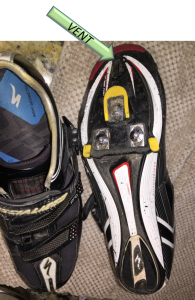Step 1
Keep your upper body warm for the duration of your ride by wearing a long-sleeved cycling jersey or a short-sleeved jersey combined with a pair of arm warmers. Then, add a light-weight cycling jacket for more warmth and wind protection. The best cold-weather jackets have zippers that allow you to customize the amount of ventilation that you receive.
Step 2
Warm legs are a must when you're riding in the cold. Ensure your legs stay warm by wearing a pair of fleece-lined cycling tights or turn your summer cycling shorts into cold-weather wear by adding a pair of leg warmers. Another rule of thumb is to keep knees covered anytime the weather is below 50 degrees.
Step 3
Minimize your heat loss by keeping your head covered at all times. About 30 percent of the body's heat is lost through the head. A helmet cover will seal off your helmet vents to the cold winds, without sealing off vital ventilation. Other head gear to consider? A helmet liner, face mask or balaclava to further protect your head and face.
Step 4
Hands. Without the right protection, your hands will be one of the first things to get miserably cold. Keep them covered with a pair of full-fingered cycling gloves.
Step 5
To keep your feet warm, you first need to keep them dry. Like the head, body heat is lost to a large degree through the feet. For cold-weather riding, use a heavier thermal cycling sock that wicks moisture and retains heat; choose socks made from synthetic fabrics. If you're wearing cycle-specific shoes, also consider investing in a set of toe covers or shoe boots. These will keep cold winds from entering through the vents in your shoes.
Step 6
Traveling through cold air causes your eyes to tear, making it extremely difficult to see. Keeps your eyes protected by wearing a pair of sunglasses. Choose a good pair of cycling glasses that curve around the face and protect eyes from wind and other elements, without fogging up.
Additional Tips from our Members
 Don't forget to turn off the air conditioning!
Don't forget to turn off the air conditioning!
There's a thread going on about toe warmers - these things work well if you need them, but ---- just like you wouldn't put on a heavy coat and then drive around in the cold with the windows down, don't forget to plug the vents on your shoes.
Especially with road shoes, these vents are designed to keep your feet cool in the summer - this is usually done by providing a vent in the bottom of your shoe. You should see a vent around the toe something like the one on my shoes (sometimes there's an additional one further back). In the winter, these provide a nice flow of VERY cold air on your toes (not good).
Here's an easy fix - get out your trusty roll of duct tape, cut off a small rectangle and plug the hole if you know its going to be a cold ride. This, coupled with the toe warmers if you need them - will keep your ten little piggies nice and toasty all day! Oh, don't forget to take the tape off at the end of the season.

